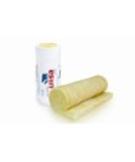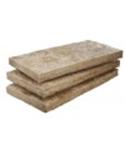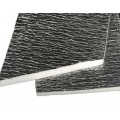How Much Does the Climate Affect Choice of Insulation?
Harmonising Insulation with the Weather
Although we are all aware of importance of proper insulation added to our home and protecting us from all the negative external factors such as excessive heat and cold, wind, moisture, not to mention high energy bills, we are always trying to save some money and often try to do something ourselves. In order of being able to do so, we usually turn to the available advice and tips we can find online or hear from our friends that had similar experience. Although some insulation materials installation can indeed be a DIY project, there is something that we should all keep in mind and that is that there is no general rule applicable to all situations. There are some general guidelines and principles that could be universally applied to different materials and different installation methods, but this does not mean that some other relevant specific rules should be neglected.
One factor that can be of great influence and should always be taken into account is the climate region your property is located in why you should consider just how much the climate affect choice of insulation.
Believe it or not, this influence is greater than you might think initially. The climate is actually much more than just the temperature, but there are also some other things that can be of great influence to your choice of insulation, such as the humidity level, the level of temperature variations, the amount of rainfall etc. It is important to know that harmonizing insulation with the weather can only increase the overall insulation effectiveness throughout the year and regardless of the time of year.
Keeping in mind that UK climate varies depending on the country or even region, there is more than one option to consider. While western parts of England, Northern Ireland, Scotland and Wales have a lot of rain and wind, and the temperatures are more or less stable, eastern parts are colder, drier but also have greater temperature ranges. This is also the case with northern and southern regions, which are however a bit wetter. All this only indicates that not all climate regions should be equally insulated, but the insulation material should follow the weather occasions in order of being efficient and serving its purpose.
Thus, if your home is located in a colder region (in northern parts of the country, for example), then your main priority should be prevention of heat loss. Furthermore, this means that you need a material that will be able to store heat within your home (no thermal bridges is a must) and keep the cold air on a safe distance from your interior. Among the materials that have high R values, that are easily harmonized with colder climates, and are quite easy to install and maintain is bulk or fibre insulation, such as glass or rock wool which are great at storing heat and preventing thermal bridges from occurring. These can be added to any part of your home construction, including floors, walls and ceilings. Since colder climates in the UK also indicate higher level of humidity, you will also need to protect the insulation material from excessive moisture and condensation, which can seriously endanger the material and thus decrease its insulation power which is something you should avoid. This is why when installing insulation in humid climates, you should consider installing vapour barriers that will add another level of protection. Finally, since limiting air flow in colder climates is another important issue, make sure to create an airtight construction by sealing all gaps and holes, where the same choice of insulation can also be applied.



Although UK does not face tropical climates, if your home is located in a warmer region, you will also have to consider and prevent heat gain. Namely, if the insulation material is not adjusted to the warmer weather, you will experience serious problems with temperature raises within your home during the hottest part of the year. This can be put under control with some type of reflective insulation which is a great way of preventing heat gain. Reflective foils are usually installed into the roof spaces and used to reflect the sun rays and thus keep the temperature at a stable level. This type of insulation is the only one that can affect heat flow through radiation, which is the most important when it comes to preventing heat gain.
Finally, it is very important to remember that some additional considerations should also be taken into account when it comes to the connection between the climate and type of insulation. The aforementioned are some general rules that could be applied to more or less extreme climates where temperature ranges are not as great. Consequently, there will still be some fine tuning left in order of having the optimal result. For example, in some cases, you might need additional ventilation to prevent condensation, in others you will need special damp proof courses installed, while some cases will require combination of more than one insulation material.
Improve your home insulation with our high-quality insulation products. Call us today, visit our webstore or contact us for assistance by email.
























































































































